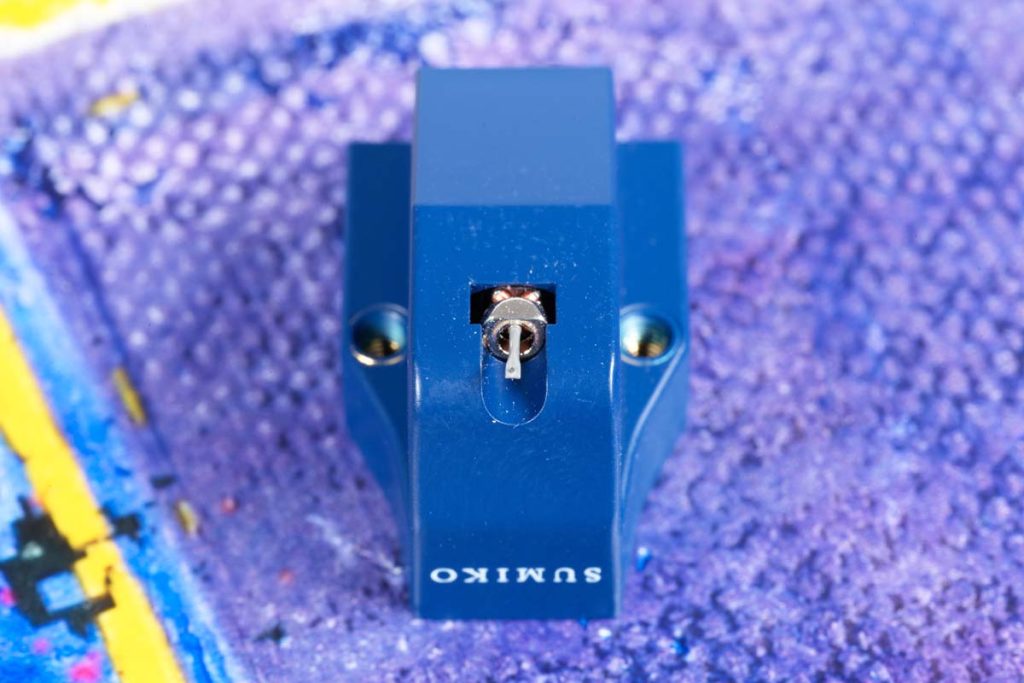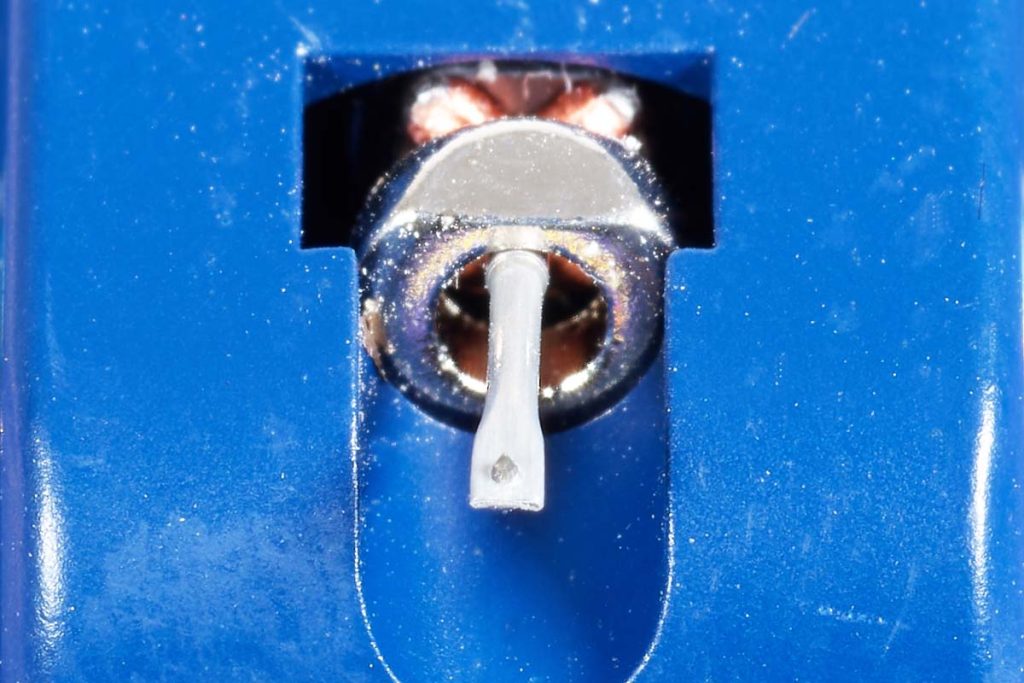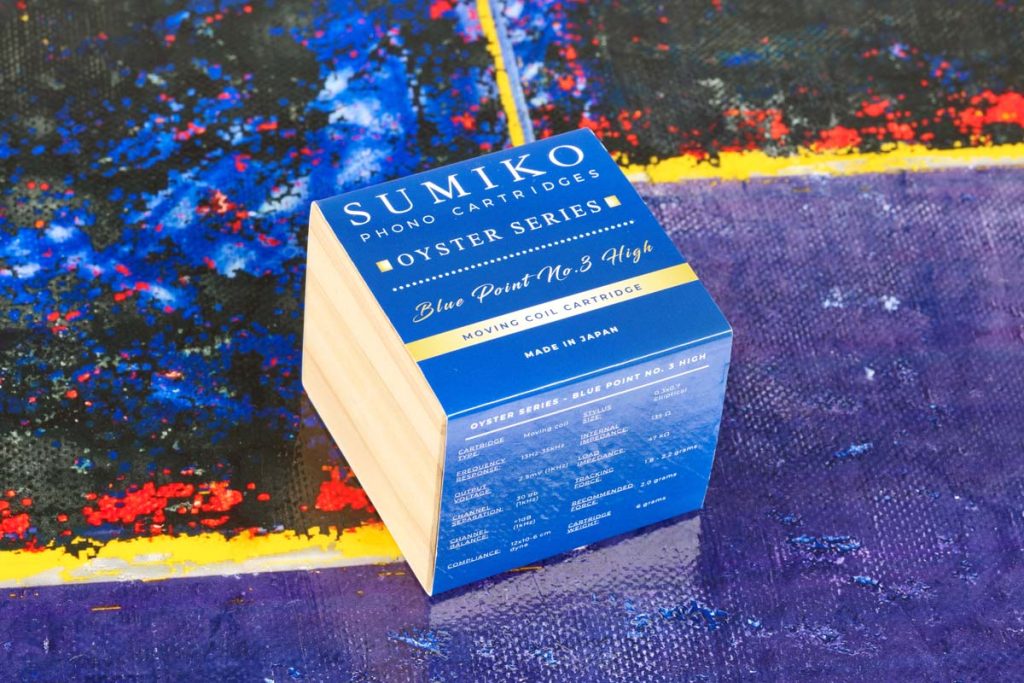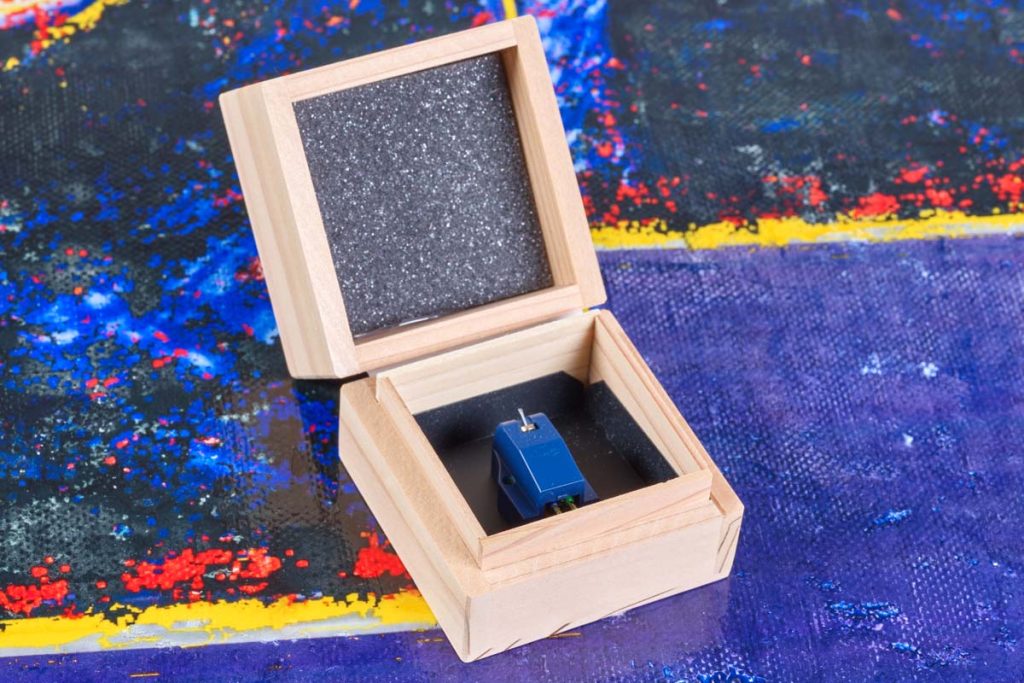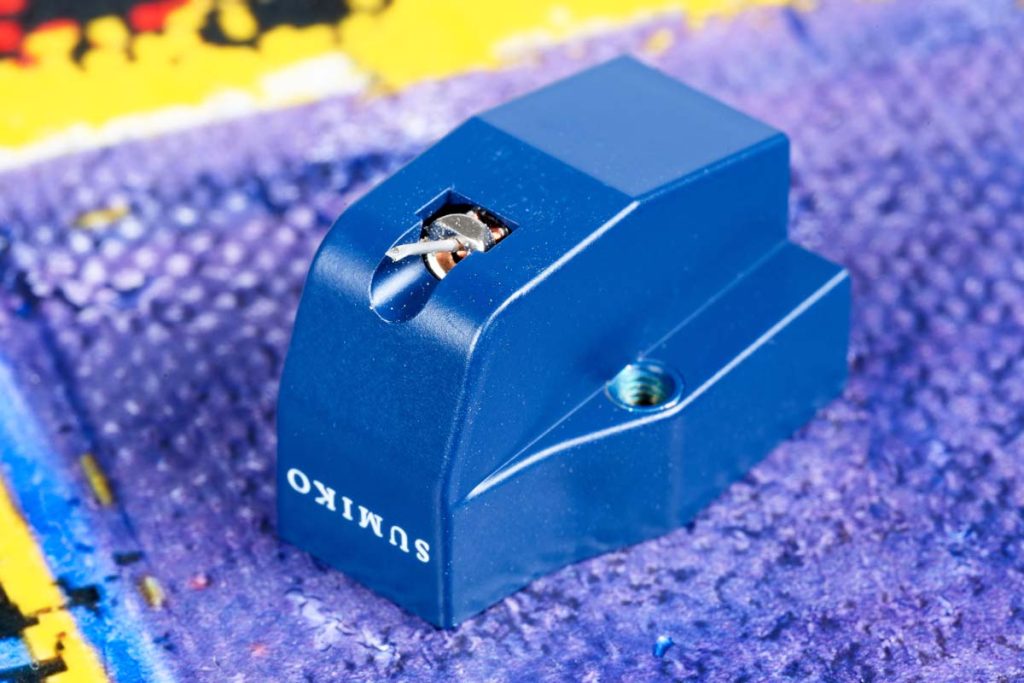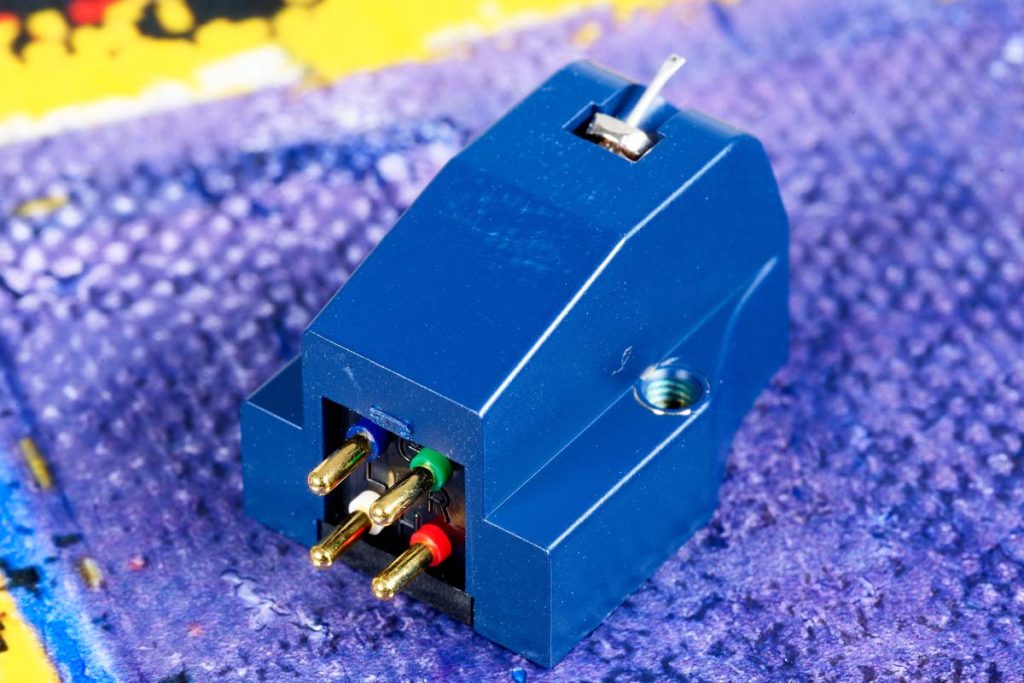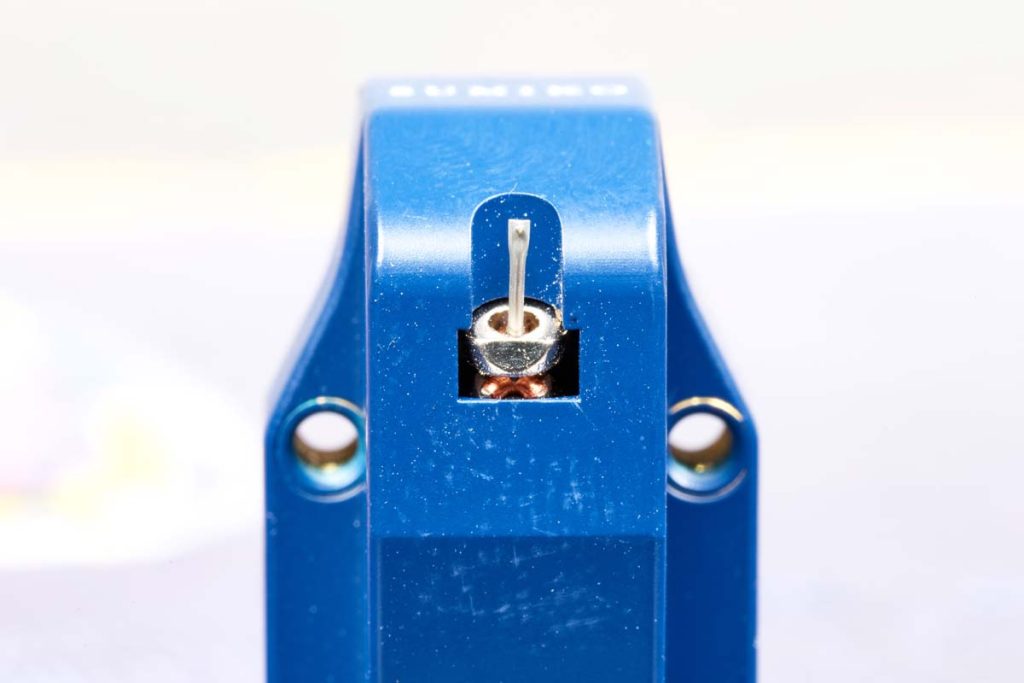About a “smooth operator” that is simple and unobtrusive, but presents a lush bouquet of audiophile qualities after the break-in phase.
All Sumiko pickup systems, including the Blue Point No. 3 High, are manufactured by an experienced producer in Yokohama, who also manufactures products for other brands as an OEM supplier. However, the Japanese keep a pretty low profile when it comes to the tricks and details of their handiwork. Günter Antoniazzi from ATR – Audio Trade, which recently took over responsibility for German sales, confirmed this to me. The Sumiko range is divided into the more affordable Oyster series and the more ambitious Reference series. Our guest today, the Blue Point No. 3 High, and its low-output version are the only MC systems in the Oyster family.
As the name suggests, this is a moving coil system with a relatively high output voltage for connection to an MM phono input. As the generator with the needle carrier unit had proved its worth, the developers focused on optimizing the housing with regard to resonance behaviour. This resulted in an (literally translated) “oh so buttery smooth, full and warm bass response that is nevertheless defined and textured, with lush midrange and sweet, airy highs” … well. In the following I will try to find out what the poet is trying to tell us.
The cartridge, which is fitted with a stylus protector, is packed in a finely polished wooden box and secured with two screws to protect it from damage during transportation.
The pickup unit consists of unspectacular components, a set, elliptically cut diamond with an aluminum needle carrier in a plastic housing. My first glance is always at the needle carrier. If this is obviously not correctly aligned, I save myself the trouble of fitting it, as it is almost impossible to achieve optimum tracking behavior. The test object is flawless in this respect. The position of the diamond in the aluminum carrier, as far as one can judge with 30x magnification, also appears to be correct.
The color-coded connecting pins are sufficiently spaced apart. My fear that they would be a little too short to hold the slip-on shoes securely turned out to be unfounded. On the contrary: connecting the wires was easier than usual thanks to the increased mounting space under the headshell.
The scope of delivery includes two pairs of screws with plastic washers, which prevent the headshell from being scratched and provide a certain amount of pressure equalization. The enclosed needle guard is particularly noteworthy. It can be removed or fitted without having to study precision mechanics and can remain on the pickup until the final fine adjustment. A rarely encountered feature that significantly increases the needle carrier’s chances of survival.
The overhang and crank were easy to adjust using a template thanks to the clear housing geometry, and the azimuth was a perfect visual fit (here too, I believe the manufacturer is responsible. If the tonearm geometry is correct, the azimuth should not have to be adjusted by twisting the headshell or the underlaying disks etc.). The technical data show the usual values, so that compatibility with most medium-weight tonearms and phono stages seems to be given. The stated crosstalk of 30 dB/1 kHz is pleasingly high for the price range.
With the tonearm aligned parallel to the turntable, I adjusted the tracking force to two grams and the anti-skating to approx. 1.5 grams. I also configured the phono pre (38 dB gain) according to the manufacturer’s recommendations (MM, 47 kΩ, 100-200 pF). The review copy achieved a decent pickup range of 70 µm/315 Hz on the Ortofon test disk. The settings were checked after the break-in phase with approx. 50 LPs. However, no changes to the settings were necessary.
A flat, mid-centric presentation with a soft, not very deep bass and hard, unresolved highs revealed that like most pickups, the Sumiko Blue Point No. 3 also requires a break-in phase. Only the already quite clean placement of the sound events in the horizontal plane indicated the potential of the cartridge. After about ten LPs the performance improved significantly in all disciplines. After about 50 records played, the Blue Point had completely blossomed.
The spatial representation of the soundstage was now exceptional, with precise and stable localization of the sound events. The depth graduation was particularly impressive, depending on the recording of course. At the same time, the sound image remained grippy without escalating into an ethereal bubble.
Details are accurately reproduced by the Sumiko pickup, but not dragged into the foreground. The Blue Point No. 3 seems to have a flair for emphasizing the essential components of musical pieces and thus facilitating access to the core of the compositions. In my opinion, this is due to a slightly boosted fundamental tone, which does not, however, result in a softening of the contour definition.
On my latest flea market trouvaille, Johnny Guitar Watson’s album A Real Mother For Ya, the pushing Moog bass stands out tonally and spatially from other deep and drawn-out synth sounds. Sumiko has a particular soft spot for the super-cool brass sections that accompany Watson’s “talking” guitar sound, which is characterized by blues and funk elements. Then an excellent recording of “Le vent nous portera” (Noir Desir) in Sophie Hunger’s interpretation fills my listening room with enormous presence, the bass drum sounds clear and bouncy, the cymbals complement the rhythm finely and radiantly without aggressiveness. Quelle beauté!
In symphonic works, the Blue Point No. 3 demonstrated its ability to reproduce large bodies of sound that did not suffer from anemic deficiencies due to a pickup that was tuned too tightly. The flawlessly crafted and perfectly designed Sumiko Blue Point No. 3 High is a fantastic all-rounder, only in the area of ultimate dynamics and high-frequency resolution is it slightly restrained. In my experience, however, the latter characteristics are reserved for cartridges that leave a much bigger hole in the wallet.
Accompanying Equipment
Turntable: TW Acustic Raven GT2 | Tonearm: Raven 10.5″ | Cartridges: Clearaudio Concerto V2, Excalibur Platinum | Amplifier: Lab 12 Melto2, Electrocompaniet EC 4. 8, Electrocompaniet EC AW250R | Speakers: Audio Physic Spark on Solidsteel SS-5 | Power supply, cables: IsoTek Aquarius, AudioQuest Yukon, Zavfino Gold Rush, Kimber 8TC BiWire, WBT | Accessories: Audio Physic VCF V Magnetic plus, Lehmannaudio Stage 1, TW Turntable Mat, Sonic Voice, bFly Octopus, Nessie Vinylmaster
Pickup Sumiko Blue Point No. 3 High
Concept: High-output MC pickup | Mass: 6 g | Stylus: 0.3 x 0.7 mm, elliptical | Stylus carrier: aluminum tube | Coils: high-purity copper | Internal impedance: 135 Ω | Load impedance: 47 kΩ | Frequency response: 13 Hz to 35 kHz | Output voltage (1 kHz): 2.5 mV | Channel separation (1 kHz): 30 dB | Channel balance (1 kHz): < 1 dB | Capacitance: 100 pF to 200 pF | VTA: 20° | Tracking force range: 1.8 g to 2.2 g | Recommended tracking force: 2.0 g | Warranty period: 2 years | Price: around €600
ATR – Audio-Trade Hi-Fi Vertriebsgesellschaft mbH
Schenkendorfstraße 29
45472 Mülheim an der Ruhr
Phone +49 208-882 66 0


